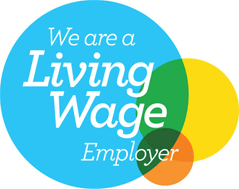Gender Reassignment Discrimination

Making Sense of the Law on gender reassignment discrimination for employees
Gender reassignment discrimination at work has been prohibited since 1999 and is now a protected characteristic under the Equality Act 2010.
You are protected by the legislation if you identify as transgender, trans, non-binary, gender-fluid, or other gender identities.
The law also protects you if you incorrectly assumed to have undergone, or are intending to undergo, gender reassignment.
Anything you have undergone, or intend to undergo, must be for the purpose of changing physiological or other attributes of sex, to be protected under the Act.
Attributes of sex are interpreted broadly, but examples include the way you may choose to dress or your hairstyle. This means that you need not undergo, or even intend to undergo, any medical procedures before you are covered by the act. If you begin the process of transitioning but later stop, you are still protected by the Act.
If you identify as intersex this is not covered under this protected characteristic unless you identify as trans, but it may be possible to claim you have been subject to sex discrimination. If you are intersex and have ongoing medical needs you may be able to claim disability discrimination.
Gender reassignment discrimination examples
Direct Discrimination
Direct discrimination is where you are treated less favourably because of the protected characteristic of gender reassignment.
It is also direct discrimination if you are treated less favourably because you have taken absences for gender reassignment when compared with any absence due to sickness, injury or any other reason.
Indirect Discrimination
Indirect discrimination occurs where the application of a criteria, provision or practice leads to a trans individuals, including yourself, to be placed at a particular disadvantage, unless this can be objectively justified. The law defines justifiable where an action is ‘a proportional means of achieving a legitimate aim.’
Harassment
Harassment is where you are subjected to unwanted conduct that violates your dignity or creates an intimidating, hostile, degrading, humiliating or offensive environment. This conduct is unlawful regardless of whether it is intentional or not and does not need to be targeted at you.
Victimisation
Victimisation is where you are treated detrimentally because you have made, or intend to make a complaint or allegation. Also, where you support someone who is complaining of gender reassignment discrimination at work.
Associative Gender Reassignment Discrimination
The law prohibits direct discrimination against you as a worker because you are associated with someone else who has undergone, or intends to undergo, gender reassignment.
How we help employees challenge gender reassignment discrimination at work
If you believe you have been discriminated against as an employee, worker or job applicant, our gender reassignment discrimination solicitors can help. We offer advice on unfair dismissal gender reassignment discrimination, gender reassignment redundancy and our Settlement Agreement solicitors can advise and sign off any Settlement Agreement you have been offered. If we are unable to resolve your problem, we can represent you at the Employment Tribunal.
For expert advice on Gender Reassignment Discrimination in the workplace, contact our Employment Law team today on 01273 609911, or email info@ms-solicitors.co.uk.


